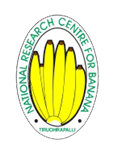Musa Transcriptome SSR Database
MusatransSSRDB is a web resource for exploring microsatellite markers (Simple Sequence repeat) specific transcribed regions of the Musa genome. It contains information on functional SSR markers for various banana cultivars of different genomic groups like AAA, AAB, ABB, BB. This database has been developed from the EST sequences available in the NCBI and transcriptome data available in National Research Centre for Banana – ICAR, Trichy. At NRCB, the transcriptome data was generated from the contrasting cultivars for resistance to various biotic (Pseudocercospora eumusae, Pratylenchus coffeae ) and abiotic (soil moisture deficit) stresses. Thus this database developed from these transcriptome data provides information on putative function of the SSR containing genes, and their expression profiling under challenged and unchallenged conditions for various biotic and abiotic stresses apart from routine SSR details like forward and reverse primer sequences, product size and annealing temperature. This database also provides information on in silico polymorphic SSRs between the contrasting cultivars for each stress. It also provide information on in silico polymorphic SSRs specific to differentially expressed genes under challenged condition for each stress. This unique information is expected facilitate the banana breeder to select the SSR primers based on the specific objectives. Thus this database is a step forward in economizing cost, time, manpower and other resources.
MusatransSSRDB could be mined based on cultivars, repeat type (mono- to hexa-nucleotide), metabolic pathways, chromosomes, biotic and abiotic stresses, polymorphism at SSR level, differential expression levels for each stress. Integrated BLAST search enables one to search for existing SSR markers given a genomic sequence. Currently, the database contains 48,298 SSRs and 2830 polymorphis SSRs and its differential expression profiles.
This provides information on their putative function, pattern of the repeat motif, primer sequences and their profile, product size, genomic locations, microsatellite repeat type (mono- to hexa-nucleotide), copy number, microsatellite length and location of the SSR’s on the chromosome.
Functional SSRs
Transcriptome sequences are particularly attractive for marker development since they represent coding regions of the genome. Moreover, the frequency of microsatellites is significantly higher in the transcribed sequences than in genomic DNA. Transcriptome resources of different banana cultivars and ESTs available in the NCBI have been harnessed for mining of functional SSRs. Functional markers can lead to the development of gene-based maps, which helps in the identification of candidate genes and which could be used in marker assisted selection. The information pertaining to these functional markers will be a good source for the banana scientific community to develop trait specific markers especially for biotic and abiotic stresses, developing finger prints, diversity and evolutionary studies.
In silico polymorphism at SSR region
Transcriptome sequences covering SSR regions derived from contrasting cultivars for resistance to specific stress (P. eumusae, P. coffeae and drought ) were compared in silico to identify polymorphic SSR regions. This information is likely to increase the efficiency of marker development for biotic and abiotic stress resistance/tolerance.
Transcriptome sequences covering SSR regions of five banana cultivars were compared in silico to identify polymorphic regions. This can be utilized for the construction of high-density linkage maps, to identify the diverse parents at molecular level and to develop finger printing etc.
In silico polymorhic SSR for differentially expressed genes
In silico polymorphic SSRs derived from contrasting cultivars for resistance to each stress were compared in silico to identify the differentially expressed genes based on their FPKM value under challenged and unchallenged conditions for each stress. This will hasten the process for developing trait specific markers.
Manoranjitham
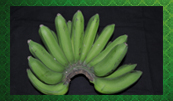
The Manoranjitham type grown in the Sirumalai Hills is considered to be an ecotype of Virupakshi.The only difference is that in the Sirumalai type, pulp is not as dry,but is juicier to sweeter and richer in flower.Fruit attachment to the pedicel is not as strong as in Virupakshi.Crop duration 14 months.
Read More »
Grand Naine
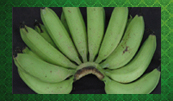
Grand Nain bananas (also spelled Grande Naine) are banana cultivars of Musa acuminata. It is one of the most commonly cultivated bananas and a source of commercial Cavendish bananas. It is also known as the Chiquita banana, because it is the main product of Chiquita Brands International.
Read More »
Karthobium
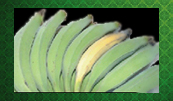
Resistant to root lesion nematode(Pratylenchuscoffeae) and being usedfor gene expression studies. Whenmale bud is absent fruits are long likePlantain and has potential for use inbreeding against Xanthomonas wilt.
Read More »
Nendran
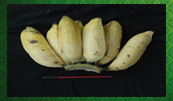
It is a popular variety in Kerala where it is relished as a fruit as well as used for processing. Commercial cultivation of Nendran has picked up rapidly in Tamil Nadu in the recent past. Nendran is known to display considerable diversity in plant stature, pseudostemcolour, presence or absence of male axis, bunch size, etc.
Read More »
Saba
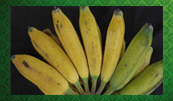
Saba banana is a triploid hybrid (ABB) banana cultivar originating from the Philippines. It is primarily a cooking banana though it can also be eaten raw. It is one of the most important banana varieties in Philippine cuisine.
Read More »
